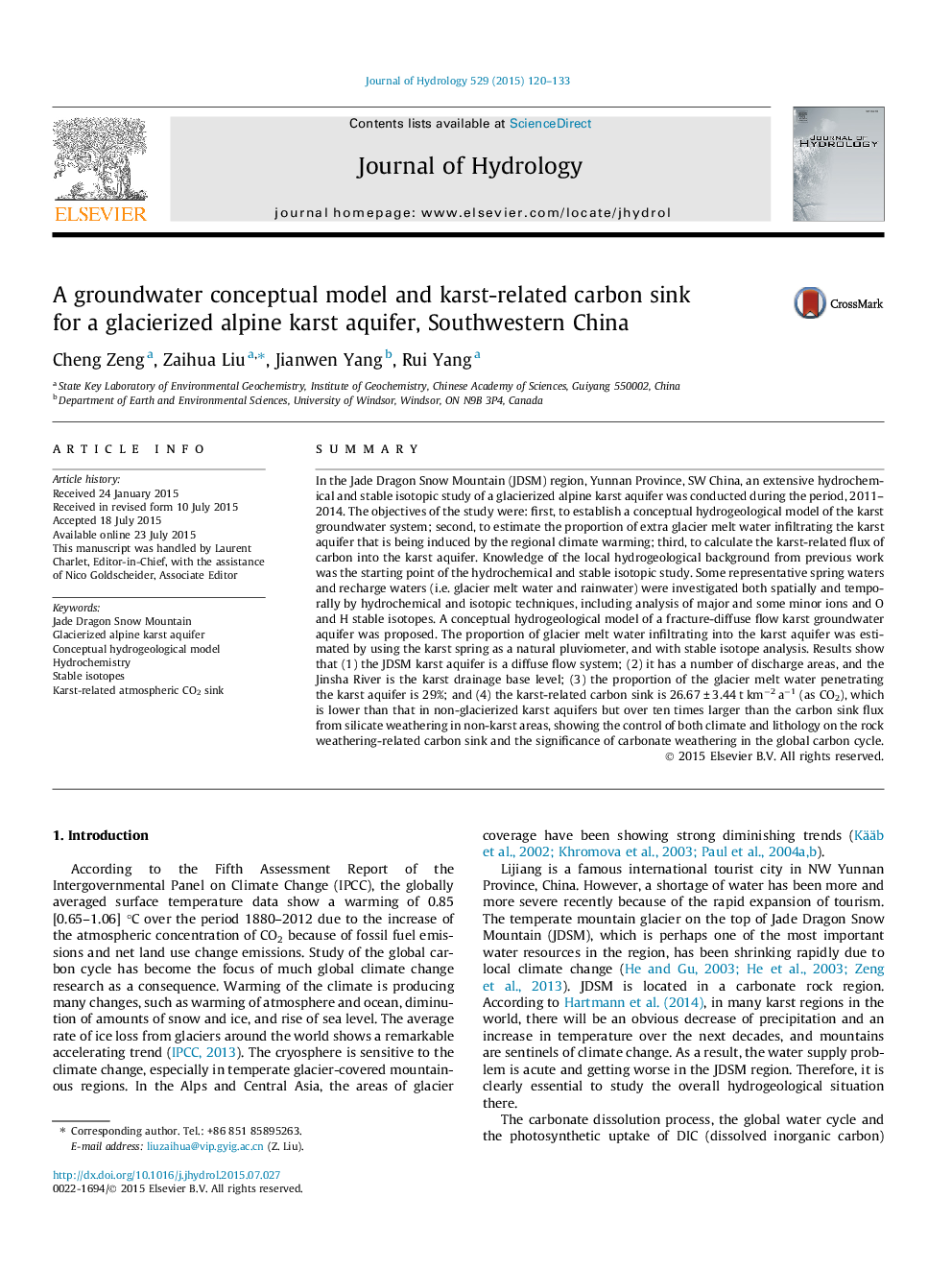| کد مقاله | کد نشریه | سال انتشار | مقاله انگلیسی | نسخه تمام متن |
|---|---|---|---|---|
| 6410978 | 1332887 | 2015 | 14 صفحه PDF | دانلود رایگان |
- A conceptual model of a glaciated karst groundwater aquifer was proposed.
- The proportion of the glacier melt water penetrating the karst aquifer is 29%.
- Karst-related carbon sink of the aquifer is 27 t kmâ2 aâ1 (as CO2).
SummaryIn the Jade Dragon Snow Mountain (JDSM) region, Yunnan Province, SW China, an extensive hydrochemical and stable isotopic study of a glacierized alpine karst aquifer was conducted during the period, 2011-2014. The objectives of the study were: first, to establish a conceptual hydrogeological model of the karst groundwater system; second, to estimate the proportion of extra glacier melt water infiltrating the karst aquifer that is being induced by the regional climate warming; third, to calculate the karst-related flux of carbon into the karst aquifer. Knowledge of the local hydrogeological background from previous work was the starting point of the hydrochemical and stable isotopic study. Some representative spring waters and recharge waters (i.e. glacier melt water and rainwater) were investigated both spatially and temporally by hydrochemical and isotopic techniques, including analysis of major and some minor ions and O and H stable isotopes. A conceptual hydrogeological model of a fracture-diffuse flow karst groundwater aquifer was proposed. The proportion of glacier melt water infiltrating into the karst aquifer was estimated by using the karst spring as a natural pluviometer, and with stable isotope analysis. Results show that (1) the JDSM karst aquifer is a diffuse flow system; (2) it has a number of discharge areas, and the Jinsha River is the karst drainage base level; (3) the proportion of the glacier melt water penetrating the karst aquifer is 29%; and (4) the karst-related carbon sink is 26.67 ± 3.44 t kmâ2 aâ1 (as CO2), which is lower than that in non-glacierized karst aquifers but over ten times larger than the carbon sink flux from silicate weathering in non-karst areas, showing the control of both climate and lithology on the rock weathering-related carbon sink and the significance of carbonate weathering in the global carbon cycle.
Journal: Journal of Hydrology - Volume 529, Part 1, October 2015, Pages 120-133
